|
Fine art nude photography is hands-down one of the most difficult types of photography out there. There many factors that have to play in harmony together for the final image to be sensual, powerful, intriguing, natural and sexy at the same time. Your first barrier is your attitude as a photographer or an artist (or both in one, preferably). Model not only has to trust you implicitly, but she also has to feel completely relaxed and safe. Her body language has to be fluid and tension free, otherwise you are both wasting your time. If you work with professional nude models then they are used to posing nude and some of them are more comfortable nude than posing to portraits. But don't be shy asking models, who even specify in their folio or website that they do not shoot nudes, if they would be interested in such photoshoot. Remember that women (especially attractive women) are bombarded with all kinds of advances on a daily basis. Most of those advances are shocking or just plain sloppy, so naturally their defense and self preservation instinct kicks in, and rightly so. So what can you do then. Build your folio with quality images only: solid composition, good lighting and skilled editing. Those do not have to be nude shots, just images that will tell the model what type of person you are, what artistic sensitivity you have, and what drives your passion for photography. Let your images talk for you. If a model likes your photographs she will most likely be interested in working with you. Then make an effort to look through her folio and see what she likes. Ask her to send you sample images from the net or her own, so you can learn what is appealing to her. I cannot stress enough how important that is. Get to know your models' personality. It not only is essential for you to understanding them, but more importantly shows that you actually care about them as human beings, and not just as a subject for the lens. Then just ask her if should be keen on shooting portraits or street fashion, which will give you a chance to meet and connect. When you meet in person you have a ground to judge when (or if) is the right moment to ask her about a nude shoot. Remember, it is not what you say but when and how. Make absolutely clear what is the purpose of the shoot, how you will use the images and what images you will be publishing and where, and what she is getting out of it. Whether it is money or photos, you have to be clear about it. Just put all cards on the table so there is no guessing or misunderstandings. Do not surprise them with something they did not expect during the shoot. In best case scenario it will create a barrier and you will have to deal with fake and stressed body language. Remember they are nude, respect that. Next, you should have some knowledge of human anatomy and how light can affect it. Learn how muscles move and align, how body moves, what poses or angles are in symbiosis with give type of light. Watch professional dancers in slow motion and see how graceful their movements are. Observe women on daily basis and learn, how they react, what they do with their hands, how they tilt heads and what emotion caused it, how they smile or fall deep into thoughts. Those emotions can be evoked or ruined by words. Choose them carefully. You will be posing the model, yes, but photos should appear not posed and natural. Real life reactions are your best school of what is natural, but there are other sources of inspiration. Try to deconstruct fine art nudes from world class photographers (they don't have to be famous, they just have to be bloody good), especially the light and how it falls. Watch how women photographers capture nudes, they have different sensitivity and you can learn a ton. Unlike dancing, the trick here is to capture that balance in a single frame, a frame that is still, and viewer's eye has to glide through the image without abruptly colliding with composition issues. Stop thinking like a man, start feeling like an artist. If you really passionate about light and shadows, forms and creating, you will forget you have a nude model posing for you. You will need at least basic understanding of how light works and what can be done with it. In fact becoming obsessed with light is your aim. For me nude photography is all about game of shadows. I do not see body parts, I see lines, shapes and the power of composition. Imagine that light falling on model's skin is like lingerie. Dress your model with it in away that she is sexy as hell but sublime and feminine, she doesn't excite but intrigues and stuns, she is not revealing but alluring, she ceases to be a model and becomes a wonder of light and shadows. Contact me directly for one-to-one online photoshop tutorials via desktop sharing. Portrait photography service, Tokyo - website http://www.portrait-photography-tokyo.com/ Photography workshops in Tokyo: http://www.ryuurui.com/photography-workshops.html Hire a photographer in Tokyo: http://www.ryuurui.com/hire-a-photographer-in-tokyo.html Photo blog: http://www.japan-in-photography.com/ Facebook: https://www.facebook.com/ponteryuurui Twitter: https://twitter.com/PonteRyuurui Google+: https://plus.google.com/u/0/+PonteRyuurui/posts For more tutorials and how to videos check out my photoshop and photography tips and tricks YouTube channel: https://www.youtube.com/channel/UCEOVGZ2rpLhR7gSPvaexxxQ Oracle bone script is the oldest officially recognized Chinese calligraphy script, and it goes back all the way to Shang dynasty, starting around 1600 BCE. It appeared on animal bones (mostly ox shoulder blades) and turtle shells. It was used by priest diviners who were acting as oracles, and also were responsible for recording important state events. Texts were carved onto the bones and then heated up in fire until they cracked. Those cracks, their shape, and the way they visually interacted with the text were considered and interpreted as signs of the gods. Oracle bone script is often seen as pictographic writing but only a small percentage of characters that have been deciphered are actually of pictographic nature. You can read about this in greater details in my article on oracle bone script here. This is the first time I actually wrote oracle bone script on skin. I have been studying it a few years ago during master classes organized by a Grand Master Kajita Esshu of the All Japan Calligraphy and Literature Association, who happens to be my calligraphy teacher. It was a small group for those who wish to go beyond regular studies of Chinese calligraphy. It was a great experience to actually translated some of this ancient writing and find out more about ancient Chinese civilization. Oracle bone script, and any type of great seal script really, requires patience. Writing should imitate chiseled characters with fairly sharp lines well defined strokes. It should appear raw and unpolished, irregular yet harmonious. Writing on skin imposes many challenges. Skin is uneven, it stretches too especially when model changes her pose. Writing itself is quite tiring because positions I have to write in are uncomfortable. Models lay down for the most part of it, first reason is that it is comfortable for them (in fact it is so comfortable and relaxing that literally all of them fall asleep in a process) and second is that it minimizes body movement and heaving. Calligraphy that you see on pictures took me about 3h to finish. We had a great two days shoot with Naomi, who flew all the way from Kyushu to Tokyo. This type of shoot requires lot of preparations, especially on my side, and also photo retouching is not as easy. Skin retouching is time consuming and one needs a lot of patience for it, but skin covered in writing is on entirely different level. It is not just down to splitting tones and textures in photoshop via frequency separation, but also separating tones from one another and lots of fine tuning and very local and taxing dodging and burning, etc. Nude photography is unforgiving as there is no chance to hide body language imperfections with clothing. There is no fancy dress that will draw attention away from the model like in fashion photography. Working with flashes that offer no modelling light one has to know how light works and predict its effect. Low key dramatic photos are based on shapes of shadows, light fall off is usually quite dramatic so shadows are well defined and rapid. A centimeter of movement can ruin or improve a photo. Last but not least, if the model does not trust the artist it will show in the photos clear as day, just like a lack of skill and knowledge shows in writing of a Chinese or Japanese calligrapher who has not mastered his art yet. Models interested in Chinese or Japanese calligraphy body art please message me directly. You can find my portfolio here. Contact me directly for one-to-one online photoshop tutorials via desktop sharing. Portrait photography service, Tokyo - website http://www.portrait-photography-tokyo.com/ Photography workshops in Tokyo: http://www.ryuurui.com/photography-workshops.html Hire a photographer in Tokyo: http://www.ryuurui.com/hire-a-photographer-in-tokyo.html Photo blog: http://www.japan-in-photography.com/ Facebook: https://www.facebook.com/ponteryuurui Twitter: https://twitter.com/PonteRyuurui Google+: https://plus.google.com/u/0/+PonteRyuurui/posts For more tutorials and how to videos check out my photoshop and photography tips and tricks YouTube channel: https://www.youtube.com/channel/UCEOVGZ2rpLhR7gSPvaexxxQ Chinese calligraphy is an ancient art, one of the oldest types of art practiced by human race. Its origins go back thousands of years back to Yangshao culture in China, or perhaps even earlier than this. Traditionally, calligraphy is practiced on paper, although poverty of some of the greatest Chinese calligraphers forced them to be creative with media. Some of them used palm leaves, others wrote with mud on temple walls. I often combine calligraphy with modern technology, and create custom backgrounds for my works inside photoshop. Occasionally you will see my calligraphy art on female skin. This type of photography art is very rewarding, but also really exhausting and time consuming. Skin is a very difficult media to write on. it is uneven, does not absorb ink well (if at all) and skin alignment changes depending on person's movement or position. Writing full body length in reasonably small characters takes anywhere between 2 to 4h. Writing position is extremely uncomfortable and unnatural. I ask my models to lay down so they can relax. It would be too tiring for them to stand for 4h and then still have enough of zeal and spark to do a few hours shoot. Photo shoots are long and can even take 10h or so in total.
Nude photography imposes other challenges. It is extremely difficult to capture well balanced and naturally beautiful body language because there are no clothes to hide any imperfections. I am not talking here about body imperfections but issues caused by highlights and shadows. Working with flash guns that do not have modeling lights in very confined spaces that we have here in Japan (the smaller the space the harder is to control light bouncing in the room), it is extremely tricky to capture the image I envisioned. I often work with deep shadows, low key and drama, and even a centimeter of movement, either of the light or a model, can change the entire mood of the photo and ruin the shot. My advice to anyone starting with nude photography would be to find a model that feels comfortable around you and vice versa. Make sure that you know what you are doing with lights. Beautiful girl in bad lighting will look bad. Make sure that your model is in a good mood, other wise do not even bother. If you are publishing her photos, make sure she agrees to it. Be confident but naturally confident. Women will sense immediately if you are fake. Be professional but at the same time make a mental connection with your model. Learn about female body and how to present it from angles that will make your model look sensual and not common. Each person has different body shape, so do not apply standards during your shoots. You can use them as starting point but two different girls will look differently in the same pose and light. Listen to your model suggestions and take them on board, you may learn something. I am shooting for female audience, I could not care less about men. In most cases it is women who understand and appreciate art, men just pay for it. Create for those who understand and enjoy it, not for those who buy it. There is a very fine line between delicate, erotic, and cheap. Learn how to walk that fine line but without crossing it. I am a multi-genre artist and consequently I have a few websites and few portfolio's. It was all too scattered so I decided to put all of my best work together in one folio, in separate categories. It took me a few days to update my entire portfolio on Smugmug. I went through all of my photos and picked those that I personally think represent what I do as an artist. New portfolio holds all types of photography: portraiture photography, architecture photography and cityscapes, street photography, photoshop manipulations and digital art, black and white photography, nature photography and landscapes, boudoir and body art photography, and Chinese and Japanese calligraphy art. All photos are in their original size at 300dpi. Some of the files are as large as 160MB, so if you are viewing them in original size it may take some times to load them up. All of the images are quality edits which is exactly why I uploaded full size files. Enjoy! Portrait photography service, Tokyo - website
http://www.portrait-photography-tokyo.com/ Photography workshops in Tokyo: http://www.ryuurui.com/photography-workshops.html Hire a photographer in Tokyo: http://www.ryuurui.com/hire-a-photographer-in-tokyo.html Photo blog: http://www.japan-in-photography.com/ Facebook: https://www.facebook.com/ponteryuurui Twitter: https://twitter.com/PonteRyuurui Google+: https://plus.google.com/u/0/+PonteRyuurui/posts For more tutorials and how to videos check out my photoshop and photography tips and tricks YouTube channel: https://www.youtube.com/channel/UCEOVGZ2rpLhR7gSPvaexxxQ Regardless of what type of artist you may be portfolio is your business card. It is your resume, marketing tool, an ad and a statement in one. It says "look this is what I can do and that is my style". It is also a self-check medium for you as the author of its content. There is no time frame within which you should review your folio. you should do it as often as needed, or as often as you feel it is necessary. If you are like me and you love editing your photos, love learning and are on a constant hunt for new ideas, new ways of retouching, new ways of toning images and so on, you will realize two things very quickly. One is that the quality of your work improves with passing time, and two, that your style is evolving. Consequently, if you have a mix of old and new images in your folio, it may happen so that some of them may become outdated and inconsistent in terms of their style. This sends a clear message to your clients that you are not a mature artist, or perhaps a lazy one, who cannot see inconsistency in his or her own work, etc. All that suggests unreliability. Also, clients will choose you mainly for your style and quality of work. They do not know you in person, so all they know about you is what they can see in your portfolio. It is essential to develop a self assessment routine and implement it rigorously in your timetable. Yes, it is time consuming, but it is worth it in more ways than one. Look at the above images which were created within less than a year. The top one is a new version and the bottom one was created last year. It is a whole new edit from scratch, and you do not have to take my word for it, just watch the video below which shows the entire editing workflow in photoshop. Both photos are very different in style and quality. First the quality of texture is much better in the new edit. Old version suffered from texture loss due to blur vignetting done manually without working on tones layer and texture layer separately. This is something I would not do now. Also, skin texture received a much more detailed retouch via micro dodging and burning which eliminates small skin bumps amplified by the hard steep angled light. Vignetting is executed very selectively in the new photo, and it complements the way I reshaped the body of the model with shadows and highlights. The entire image was turned on its axis counter-clockwise to add more kinetic energy and create diagonal lines across the image. They contrast with a general calm and moody feel to the photo. The old edit was a bit too static for my liking and was not multilayered. Dodging and burning emphasizes the drama and creates more visual anchors. I added a tilt shift blur to redirect the attention of the viewer to the body art and lines running across model's body. I also changed the toning to much warmer, which further calms the feel of the photo. There are no happy accidents here, it is all planned and premeditated based on what I feel when I look at the photo. The old edit was not in full agreement with my current style and it had to be addressed. I truly enjoy re-working my images. Some of them I re-edit a few times, even complex photoshop manipulations. I do not care how much time it takes. It is always a very rewarding and educational experience.
Photography workshops in Tokyo: http://www.ryuurui.com/photography-workshops.html Hire a photographer in Tokyo: http://www.ryuurui.com/hire-a-photographer-in-tokyo.html Photo blog: http://www.japan-in-photography.com/ Facebook: https://www.facebook.com/ponteryuurui Twitter: https://twitter.com/PonteRyuurui Google+: https://plus.google.com/u/0/+PonteRyuurui/postsFor more tutorials and how to videos check out my photoshop and photography tips and tricks YouTube channel: https://www.youtube.com/channel/UCEOVGZ2rpLhR7gSPvaexxxQ Any type of photography that involves photographing people is based on some sort of a relationship between the model and the photographer. Naturally this applies to any type of art, like sculpture, or painting. Portrait photography for example is more difficult than people may think. Often times I have to be able to capture the real character and personality on my camera, after meeting them only a few minutes earlier. It is our job as photographers to be able to connect, to reach through all the social masks and safety doors, and get through to the core of a person. On top of this we have to be able to evoke real emotions, and be fast enough to photograph them before they fade away. Now, boudoir or nude photography brings this to a higher level. A model is trusting us with her intimacy, and it is crucial to respect it. I don't know about you but I love working with the same models over and over, as the more we work together the better the photos will be. Look at painters, they all had their favourite models, and for a good reason. It is a unique bond of mutual appreciation and trust, difficult to build, but easy to lose. Then there is body painting or in my case calligraphy body art. Ask a professional photographer if he would dare to touch a female model during a nude shoot. I highly doubt it. I have to spend hours (full body texts can take as long as 4h or more of continuous writing) touching the model head to toes during writing. This is one of the most intimate types of photography out there, and it could not be done without a really good understanding or trust. Respect and understand your models guys, listen to them and learn, and you will get great results. My Youtube channel with free photoshop tutorials Photography workshops in Tokyo - click for more details. Hire a photographer in Tokyo Buy original Chinese and Japanese calligraphy art Check out my new portrait photography website! model: Asuka
This is a re-edited version of a photo that I took back in 2013 with one of my most favorite texts - the Buddhist Heart Sutra. This is my copy of a classic by Wang Xizhi from the 4th century C.E. in semi-cursive script. I gave this photo an old distressed look, as if it was recovered from an old building or some forgotten drawer on an attic in the distant future. The scratched-like text to the right is in oracle bone script and reads "Tokyo 2015". I think the original mood of the photo fits perfectly for such a dramatic edit. This photo now tells many different stories.
Girls interested in boudoir / nude / body art shoot please contact me directly (Tokyo area). My Youtube channel with free photoshop tutorials Photography workshops in Tokyo - click for more details. Hire a photographer in Tokyo Buy original Chinese and Japanese calligraphy art Check out my new portrait photography website! Due to increasing amount of emails and inquiries regarding Japanese kanji tattoos written in calligraphic scripts, I decided to launch a new service page with all the details and prices. Tattoos are for a life, so when searching for a design we want something unique. Tattoos in Chinese characters are common, but I have rarely seen any decent ones, not to mention any good ones. If you are looking for a Japanese kanji tattoo design you should look for someone knowledgeable in the era of Chinese characters and Japanese or Chinese calligraphy. Tattooing computer fonts is a blasphemy, not to mention that such tattoos look really boring. IT may seem cool in the Western countries, but whenever you meet any native speaker of a language that utilizes Chinese characters, your tattoo will not be appreciated. Below photo - calligraphy in ancient Chinese small seal script, reading 龍精 - dragon spirit. Model: Eccaia
My Youtube channel with free photoshop tutorials Photography workshops in Tokyo - click for more details. Hire a photographer in Tokyo Buy original Chinese and Japanese calligraphy art Working on photos and editing tons of shots may lead to tunnel vision and resulting in similar type of edits. Lots of people use presets, not even knowing what they do. That includes the professional photographers as well. Some people don't even possess the skill to edit their own work, which is pretty scary. It is like a cook who buys veggies on the market and calls for help to cook the meal. Learning and studying will develop your artistic vision, and it is most likely to change over the time. I learn new skills on a daily basis, and my photoshop techniques improve quite rapidly. I am often revisiting some of my favoring works and re-editing them applying what I have learned since I worked on them. Sometimes I give photos a new twist. All in all I love editing 1 photo in many different ways. It leads to amazing discoveries. In this case the reason for editing is complex. One, is that I love this shot. Two, is that I love this calligraphy classic, and three is that this very classic is one of the mandatory subjects for my Master Instructor exams in calligraphy this year.
model: Asuka / Japanese calligraphy - my copy of a Chinese classic Shu Pu from the early Tang Dynasty (7th century) by Sun Guoting, who was an absolute genius of cursive script. Here is a new edit of a shot from last year, with a Japanese model Asuka. My pohoto retouching style has evolved so dramatically, that I am re-editing all my photos taken 6 months ago and before. Lots of work, especially that new photos are coming in nearly on a daily basis. It is important to keep the portfolio up to date and all photos there should be consistent in style. Anyways, I enjoy editing photos, so I am having fun, especially that it is really cool to see new editions and new versions, and having a chance to compare how I evolve as an artist. This is a fragment of Heart Sutra, it is a copy of a masterpiece from Tang Dynasty by a great calligrapher Ouyang Xun, in standard script.
Female models in Tokyo area interested in a photoshop, please contact me directly. Photo editing & Chinese and Japanese calligraphy tutorial videos Buy fine art photo prints at my store on SmugMug. Photography workshops in Tokyo - click for more details. One of my older Japanese body art shots, from a photo shoot back in 2012 wiith a Japanese model Asuka. Text reads: 櫻吹雪, i.e. - snowstorm of sakura petals. I gave this photo a new look, much more moody, dramatic but at the same time intimate and mysterious. High contrast, low key and slight blur on the edges. Girls interested in body art photo shoot please contact me directly (Tokyo area only). You can view some of my other body art photos, as well as boudoir shots on my portfolio on SmugMug, here.
Here is re-edited photo from a Chinese calligraphy body art photo shoot that I had with a Japanese model Asuka some 1.5 year ago. I have redone this shot from scratch and gave it a fresher look. I also added some textures, delicate bronze tones, and engulfed it in deep shadows, to add a bit of mystery. Asuka is Buddhist, and she actually asked me to write the Heart Sutra on her skin for protection. It is a copy of a stunning masterpiece by Ouyang Xun, a brilliant Tang dynasty calligrapher, who excelled in standard script. I edited this photo in photoshop, trying a few filters from Google software and Topaz labs
This photo is one of the shots that I took last year during a Japanese calligraphy body art marathon with a Japanese model Asuka. I gave this photo a new look today so I decided to post it. I gave it a nice brown finish with a bit of grain, and I really like how it turned out. If you want to see my other body art work, visit my portfolio on SmugMug.
Text: 幸せは旅。目的にあらず。 / Happiness is a journey, not a destination. Models in Tokyo area interested in a body art or boudoir photo shoot please contact me directly via my email. Each type of photography requires different set of skills and artistic sensitivity. For example, street photography asks you to make a connection with the buzz around, to possess a certain level predictability of upcoming events, and even compassion. Architecture photography requires geometrical imagination, or the gift of seeing the world in black and white tones. Wildlife photography will test your patience and even how you can deal with loneliness. Portraiture, on the other hand, will test your personal and psychological skills. A good portrait photographer has to have an outstanding understanding of human nature, and needs to be able to connect with the person he photographs, and reach deep inside, bypassing any social masks and ego. If the portrait has no soul written all over it, you do not have a good shot.
Model: Lin Lynn This is the eights photo of the recent Chinese calligraphy body art photo shoot series, with a Japanese model Asuka. Here, I decided to go heavier down the vintage path, by maintaining the some contrast between shadows and highlights, but at the same time I smoothed the tones and selectively blurred the edges of the photo. I really like the final result, hope you guys enjoy it as well! It looked quite nice crossed processed in a motion picture style (blue shadows / orange-ish highlights), but black and white is much more classe and allows for the eyes to focus on the writing, rather than the whole scene. This photo was not shot in high key, but I made it look like it was. The morning light was backlighting the whole body frame of the model, and the sides of the photo (curtains) were drawing too much attention, so I decided to brighten up the skin and bring the entire photo to similar brightness level, and them create the contrast between the background, skin and the writing, framed by the undies and the head. Now the eyes are trapped in Chinese calligraphy written on a slender curvy body. Enjoy!
If you are into photo editing, please view my photoshop video tutorial with tons of photo editing tips and tricks. Here is yet another shot from my recent Chinese calligraphy body art photo shoot with a Japanese model Asuka. When I was editing this photo I aimed at creating a contrast between the skin and the Chinese characters, and then the skin and the background, yet I still wanted to maintain a subtle tone transitions across the entire image. Majority of work was done manually, though I used a few filters from Topaz and Nik software. Enjoy!
Here is another capture from my recent boudoir photo shoot with a Japanese model Asuka in Tokyo. A subtle game of curves, light and brush strokes. I love seeing Chinese or Japanese calligraphy on woman's skin, I think it looks very alluring and elevates the feminine nature of such photos to another level. Toned down and non-invasive post processing method is crucial here, and it is important not to overdo it.
Girls currently residing / visiting Tokyo, who interested in a photoshoot, please feel free to contact me directly. I had lots of fun with this photo. It was a tricky shot to take, as the background was very bright (morning sun at a steep angle), but the main subject was back of the model covered in Chinese characters. I also wanted to utilise those beautiful delicate shadows that sculpted the body form. I added some flares and bokeh`ed lights to make it more dreamy, and lazy-early-morning-like. Model: Asuka.
Girls in Tokyo area interested in boudoir or Chinese calligraphy body art photo shoot, please contact me for details. Here is another photo from this week Chinese calligraphy body art session with a Japanese model Asuka. I had a general idea to create something delicate and sensual with this photo and I decided to merge the light tone vignette with the new blur tools in photoshop CC. There are many changes in the new photoshop version, and I highly recommend you to play around with them. The blur filters menu was expanded and new features appeared. I was trying out the new field blur, which has quite a few different options, and then masking it out with layer masks. By combining it with a bright, sort of misty vignette, it gave a very dreamy look to this photo.
Here is another photo from a Chinese calligraphy photo shoot with a Japanese model Asuka. They say that picture says a thousand words, so it would seem appropriate to let the photo speak for itself. In addition, here is a translation of the first chapter of this classic, transcribed Nathan Sturman, MA. The sky was black and earth yellow; space and time vast, limitless. I started to edit photos from my last Chinese calligraphy body art photo shoot with a Japanese model Asuka. This time I was writing a Chinese classic, known as Thousand Character Classic. This particular version is my copy of a masterpiece by Zhi Yong. The place for a photo shoot was great, a luxury room with lots of space, which allowed me to use my telephoto lens. The writing itself was quite time consuming, I think it took about 3 hours. I wanted to cover the entire body of the model, but I think it would take us at least 5h or more (possibly 6), so perhaps next time. More photos are coming, so stay tuned! To view my other calligraphy body art photos, see my portfolio. To book a body art or boudoir photo shoot in Tokyo, please contact me directly.
I am currently looking for new models (any nationality / skin tone) in Tokyo area, for boudoir and calligraphy body art photo shoots. Girls interested in working with me, please contact me at [email protected] / FB: Ponte Ryuurui, or via google+. The ony restriction is that for calligraphy body art I need to work with skin that is tattoo free, though it depends on type and quality of the tattos, their placement, size and colour. I do not require a model to have any experience, I can guide you through the photo shoot. 芸術的な写真に興味がある女子はご連絡ください(経験なしでもOK)
Photo below / model: Asuka The alluring beauty of woman's body is subject that hants artists. Not sure if you knew this, but there are no straight lines in nature, everything is curved. Straight lines are an illusion. Our eyes are drawn to the harmony of arches and supple shapes. Perhaps this is one of the reasons why the Chinese calligraphy in cursive script, or even more so the Japanese kana script, are so greatly admired and appreciated. Those both worlds are a perfect match, and apmplify one another. Another thing is that photography and calligraphy are closely related arts, and I feel that I can express much more when using both medium to create art. Model: Lin Announcement: Girls interested in a boudoir or calligraphy body art photo shoot - please contact me via FB or at [email protected] / 芸術的な写真に興味がある女子はご連絡ください(経験なしでもOK)
From now on you will see more of my digital art. The spectrum will be rather wide, ranging from photoshop manipulation, through composite photos (two or more photographs combined and post processed digitally), pure digital art, to all of those combined with added Japanese calligraphy (or Chinese calligraphy). I will also occasionally write calligraphy digitally (i.e. not with a brush), as I did on the abstract piece below. I will go heavily into body art calligraphy with serious post processing, cyber and fantasy motives, and so on. Why am I doing this? Because it is hell of a fun, that’s why! For those of you who enjoy my traditional calligraphy art, rest assured that I will continue this as well, but I do not think that you will see much of my calligraphy art on white backgrounds.
Photo: Distant Soul (遥魂) - fully digital art |
Categories
All
AuthorPonte Ryuurui (品天龍涙) Archives
August 2020
|
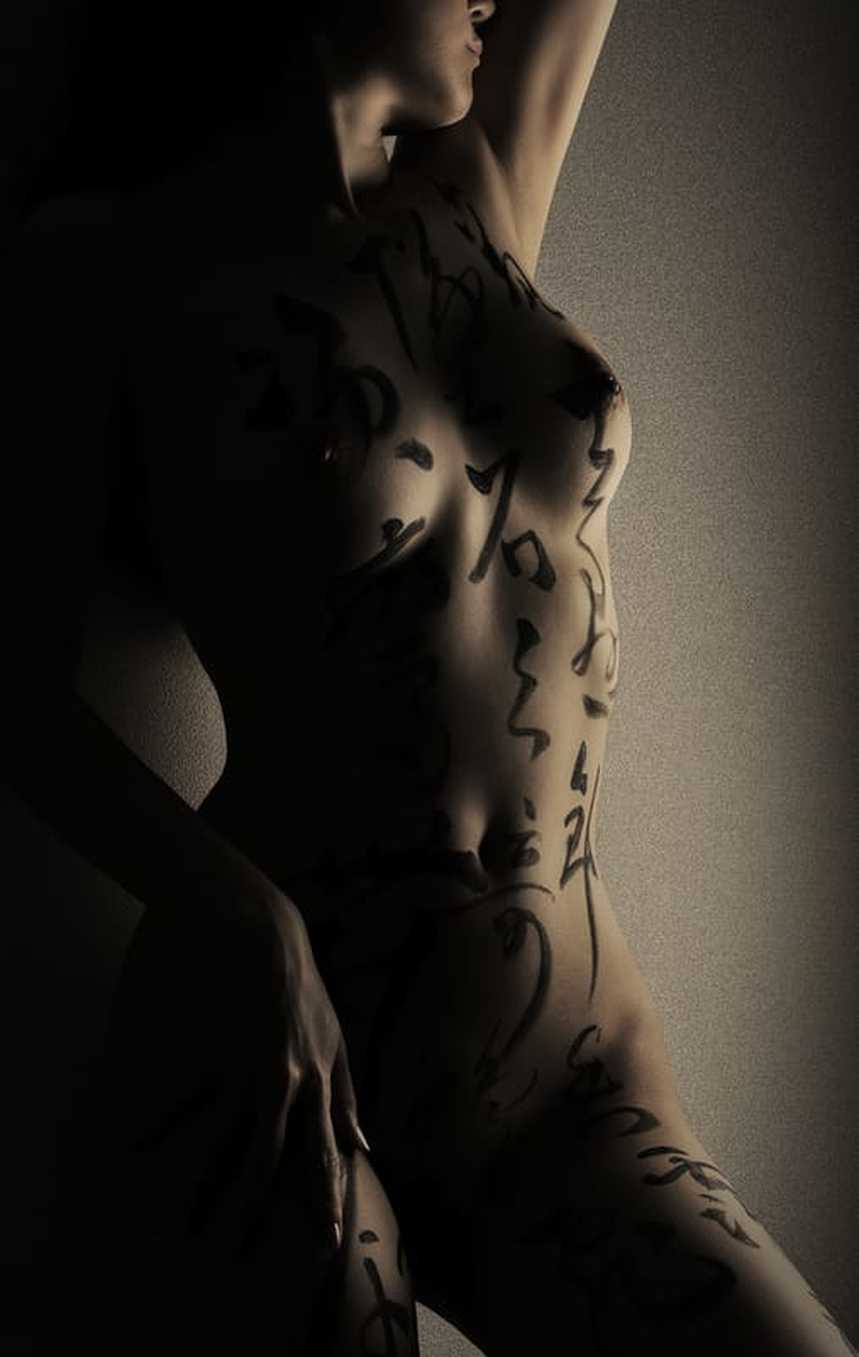
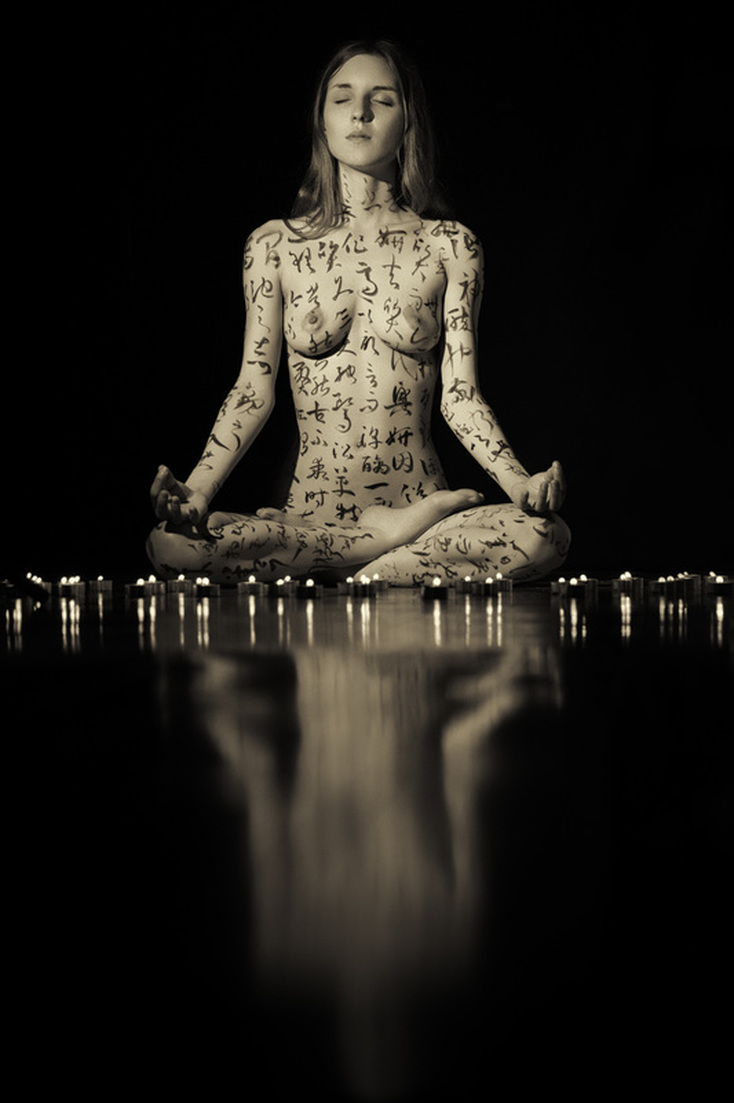
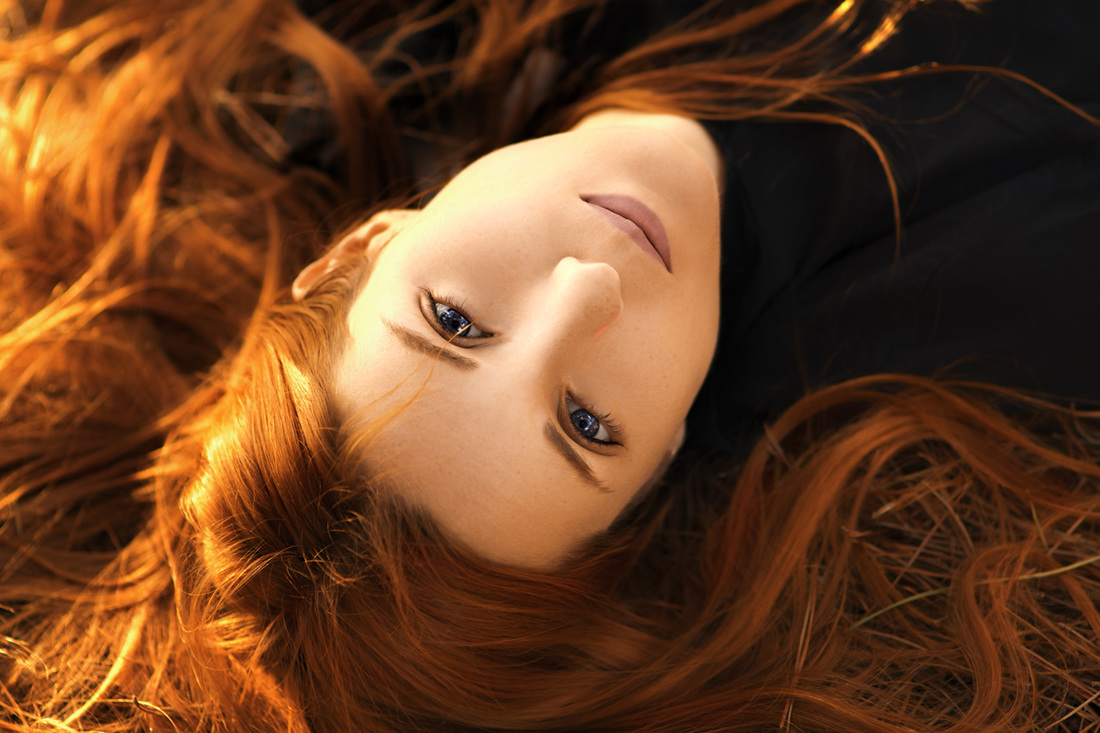
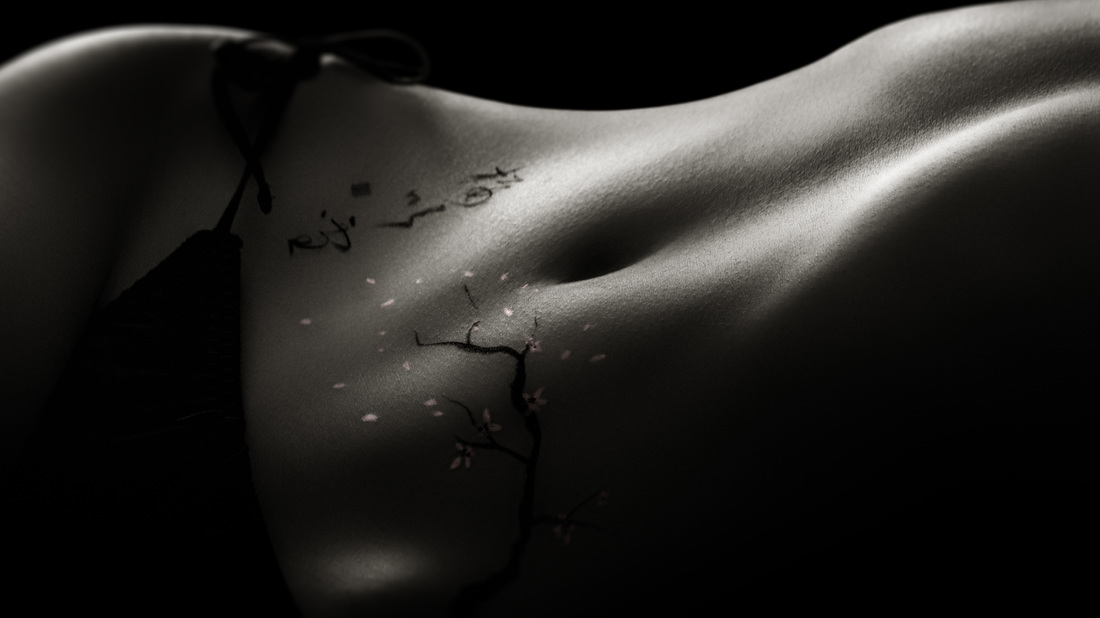
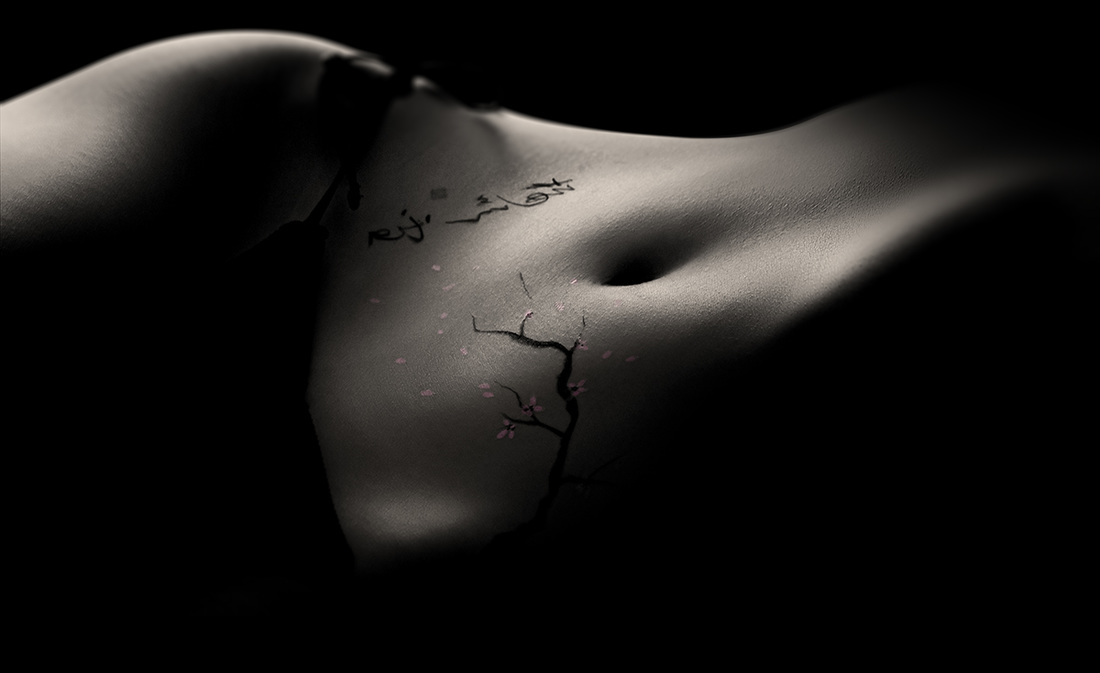
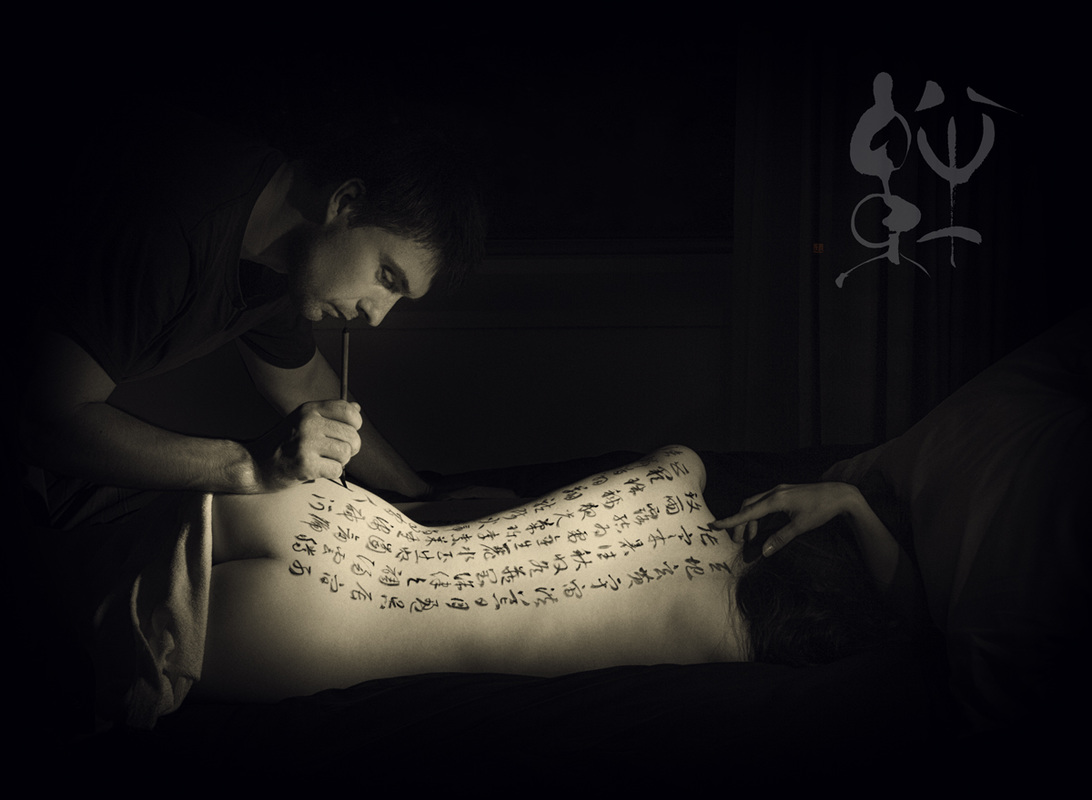
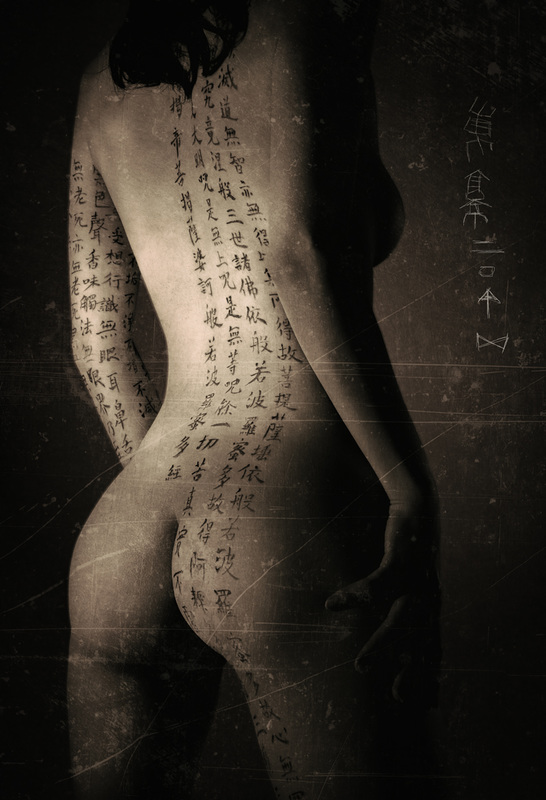
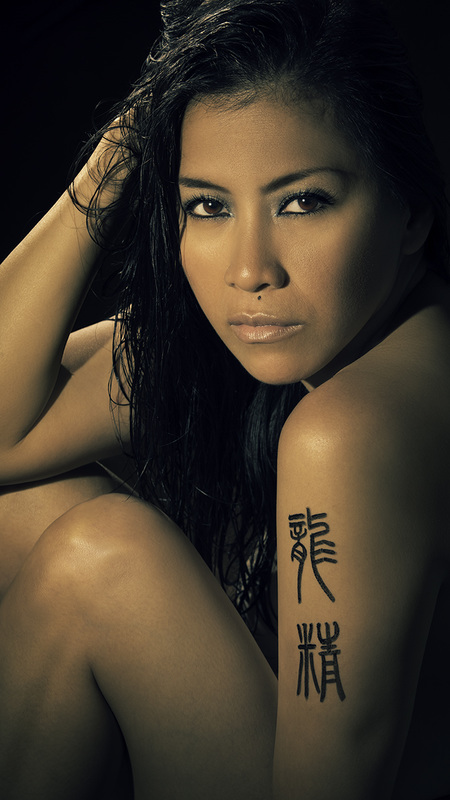
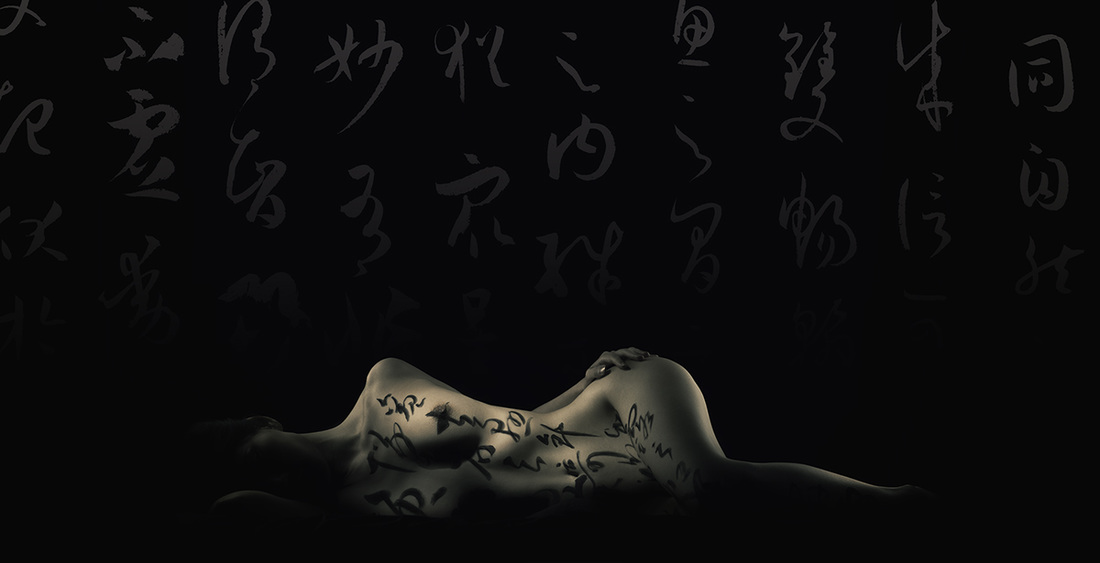
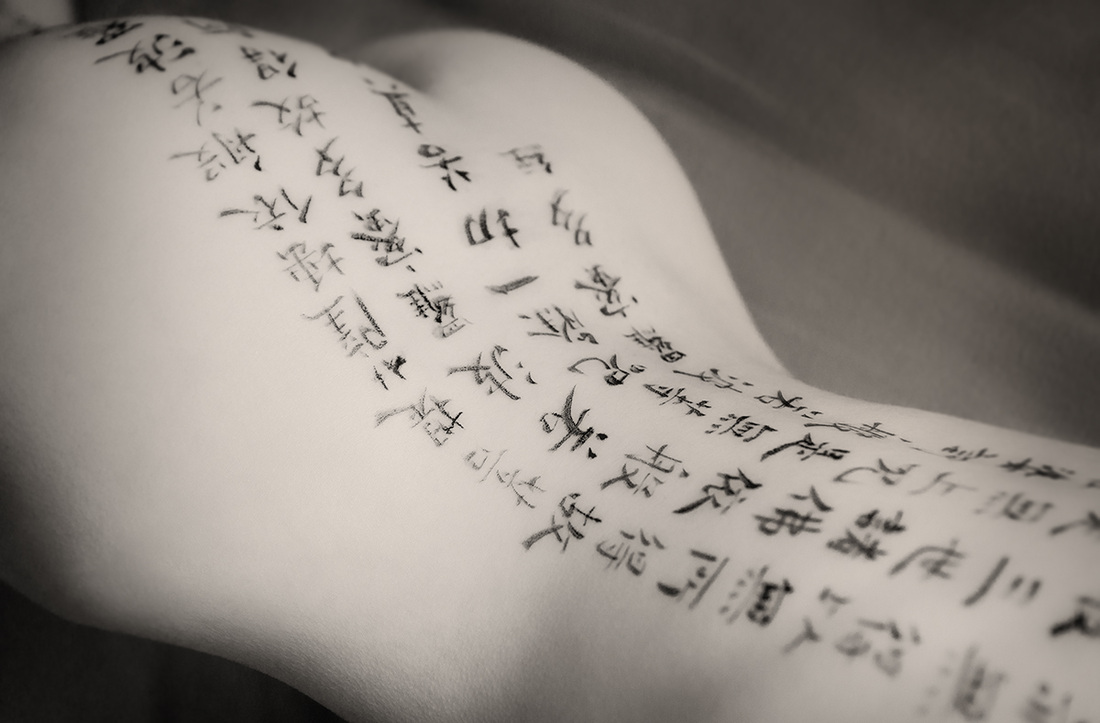
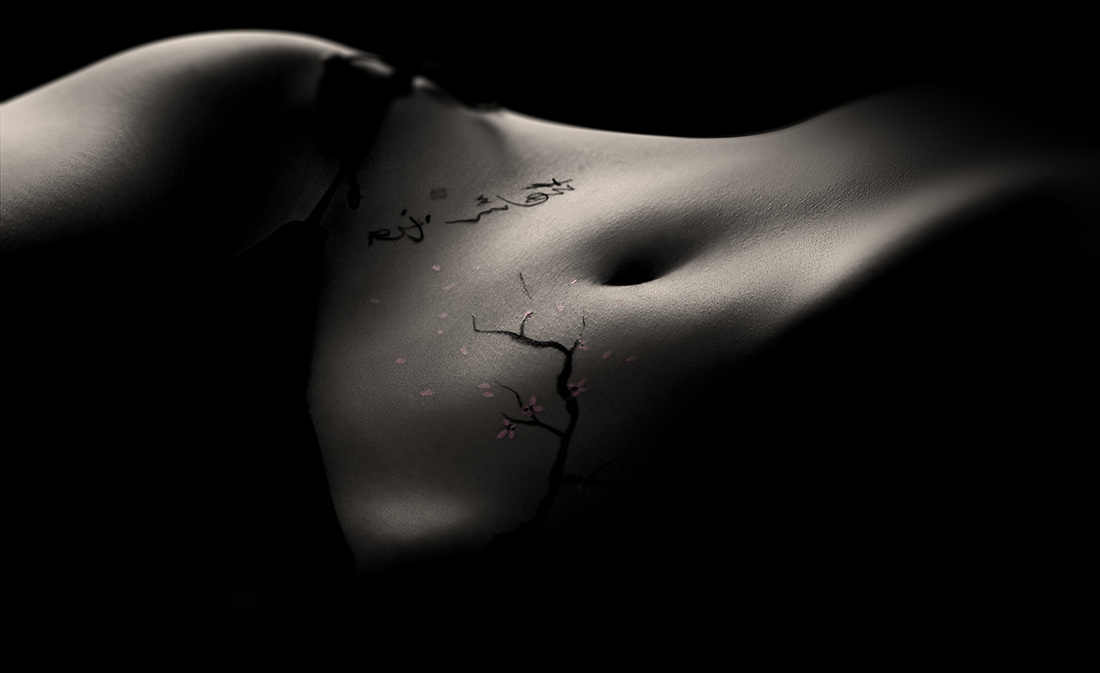
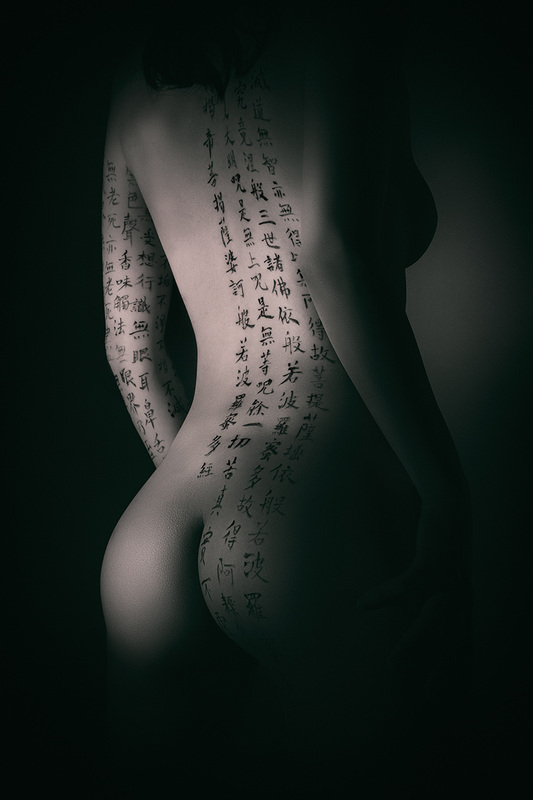
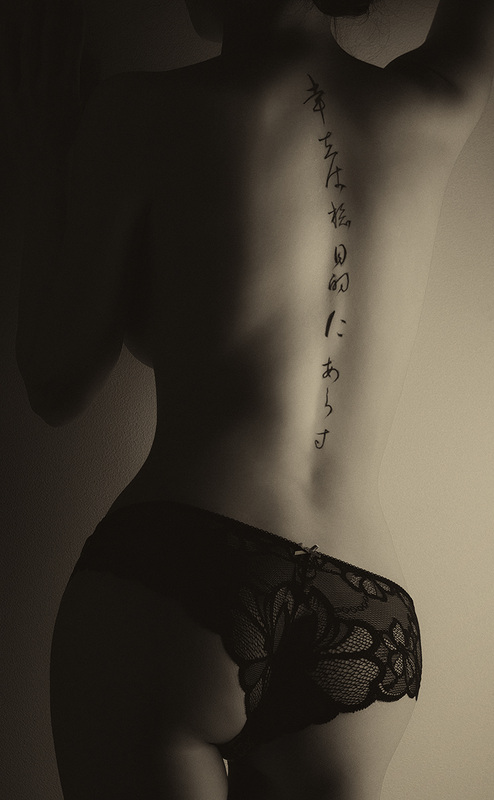
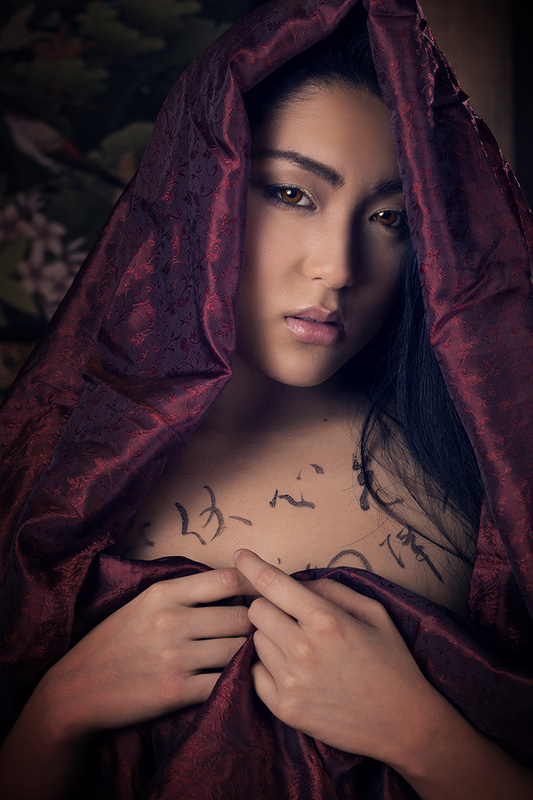
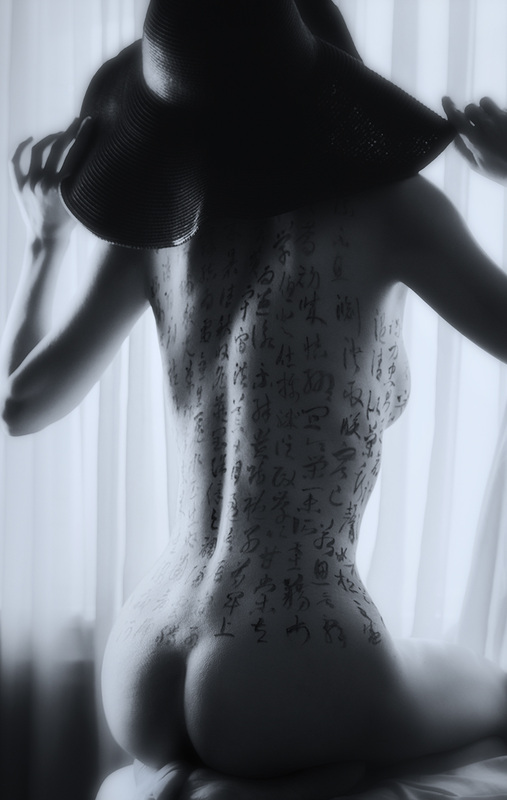
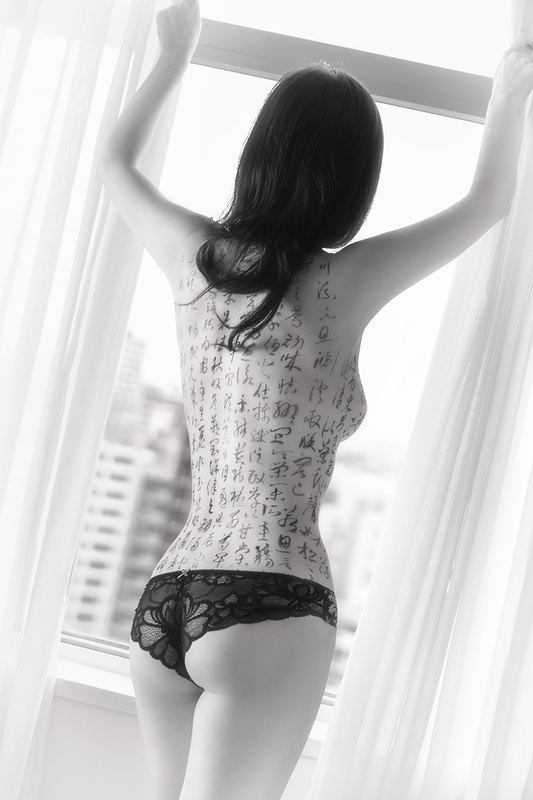
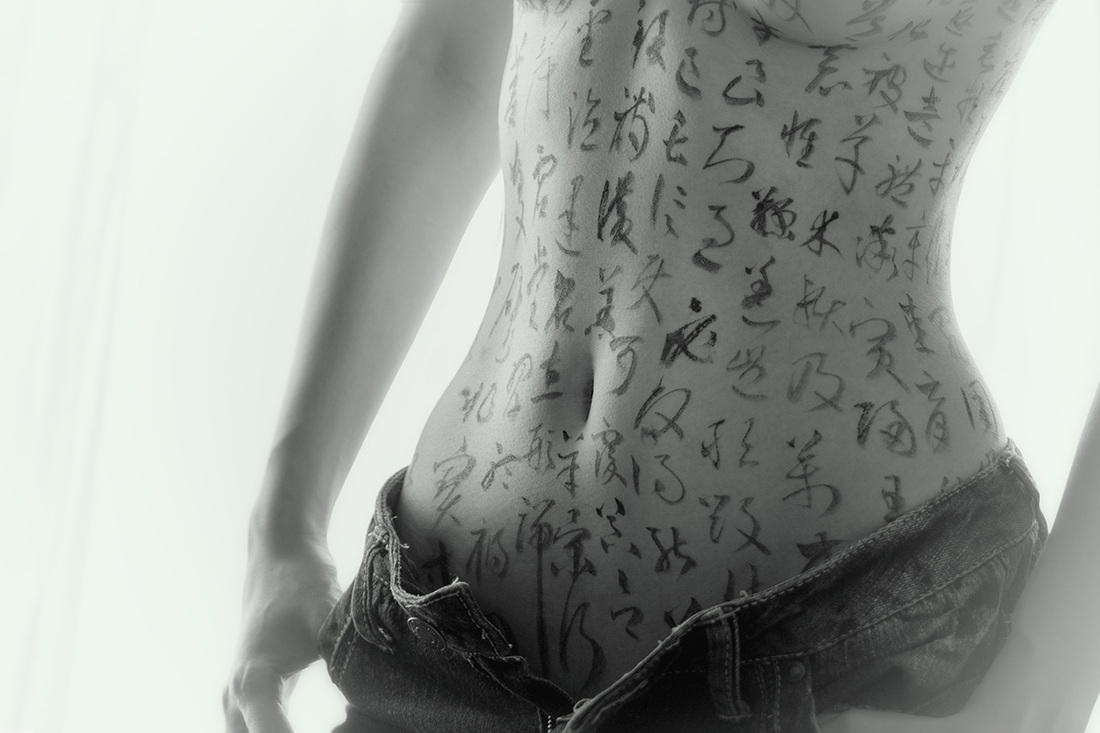
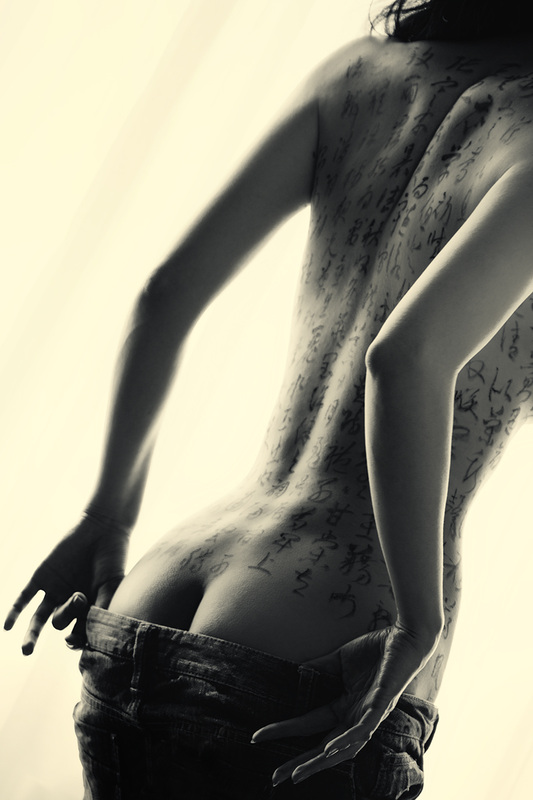
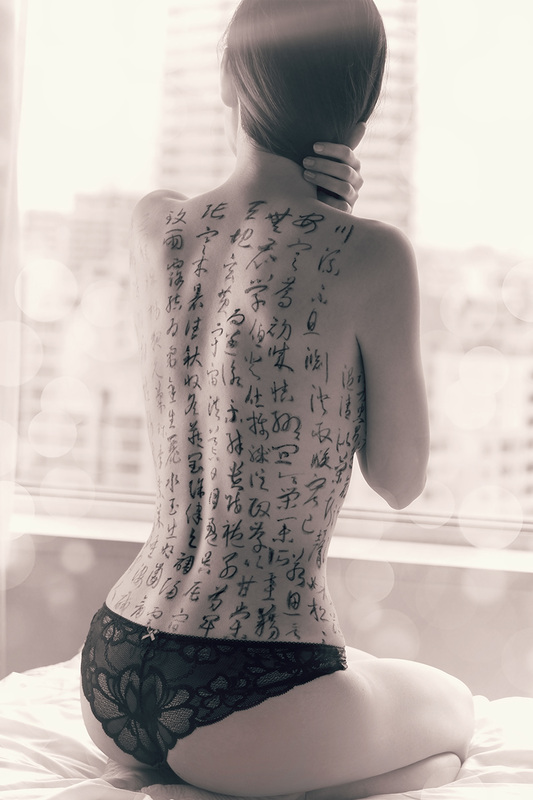
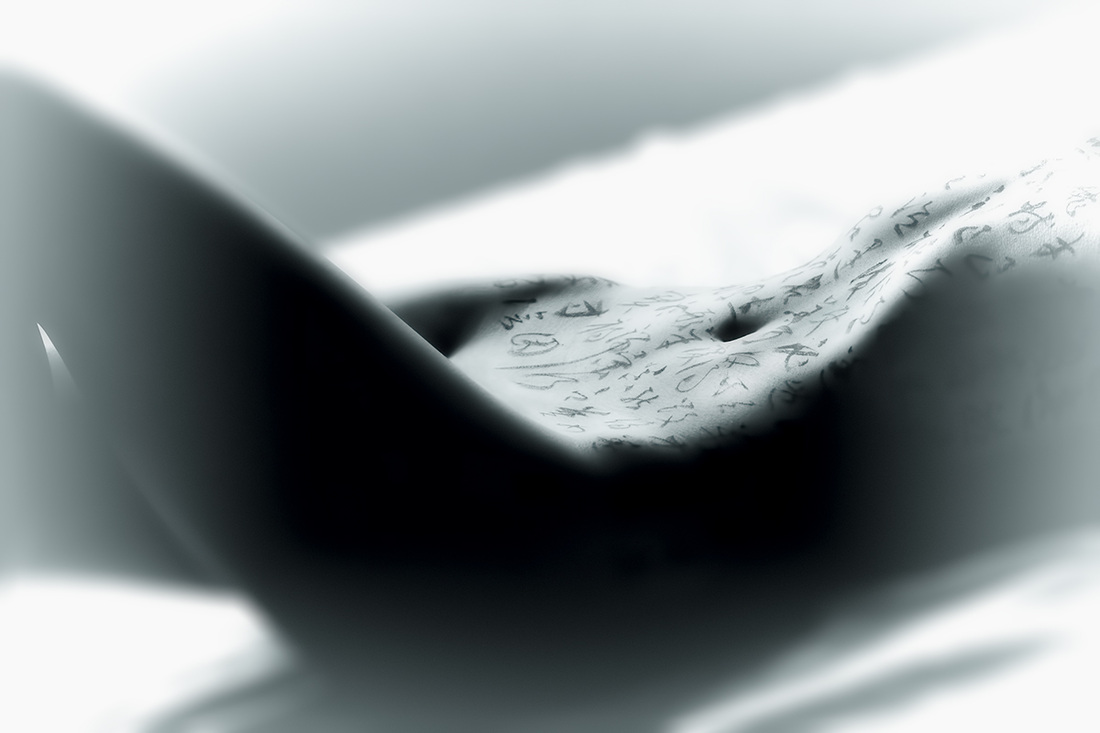
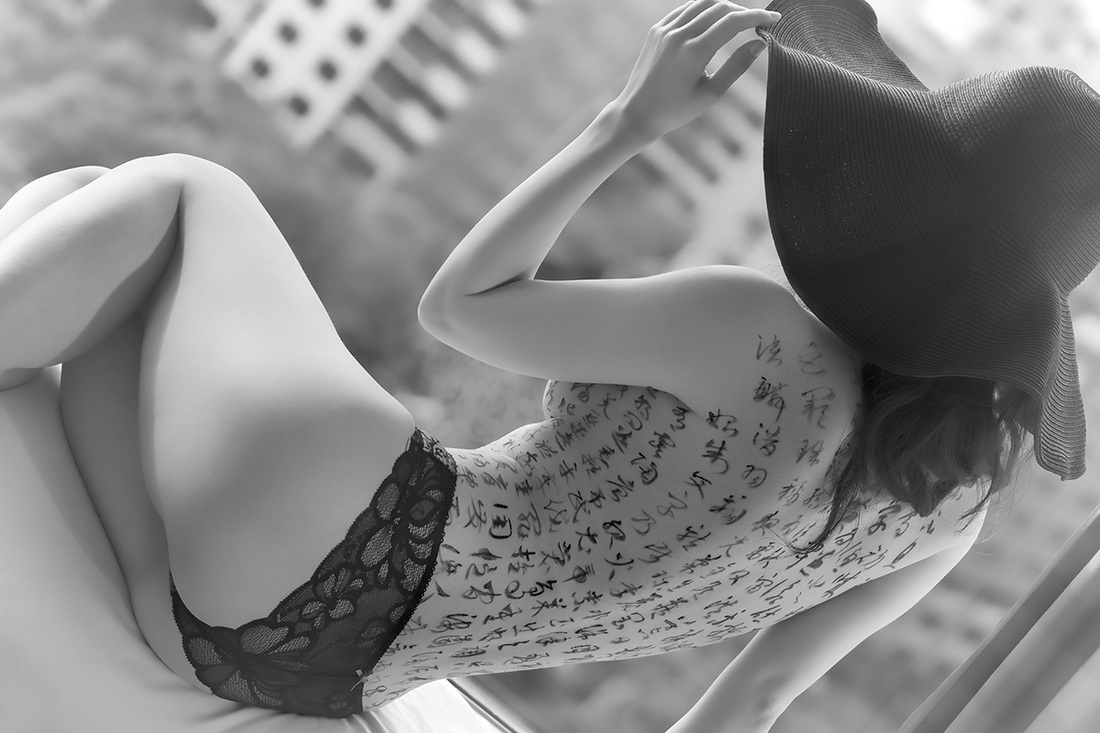
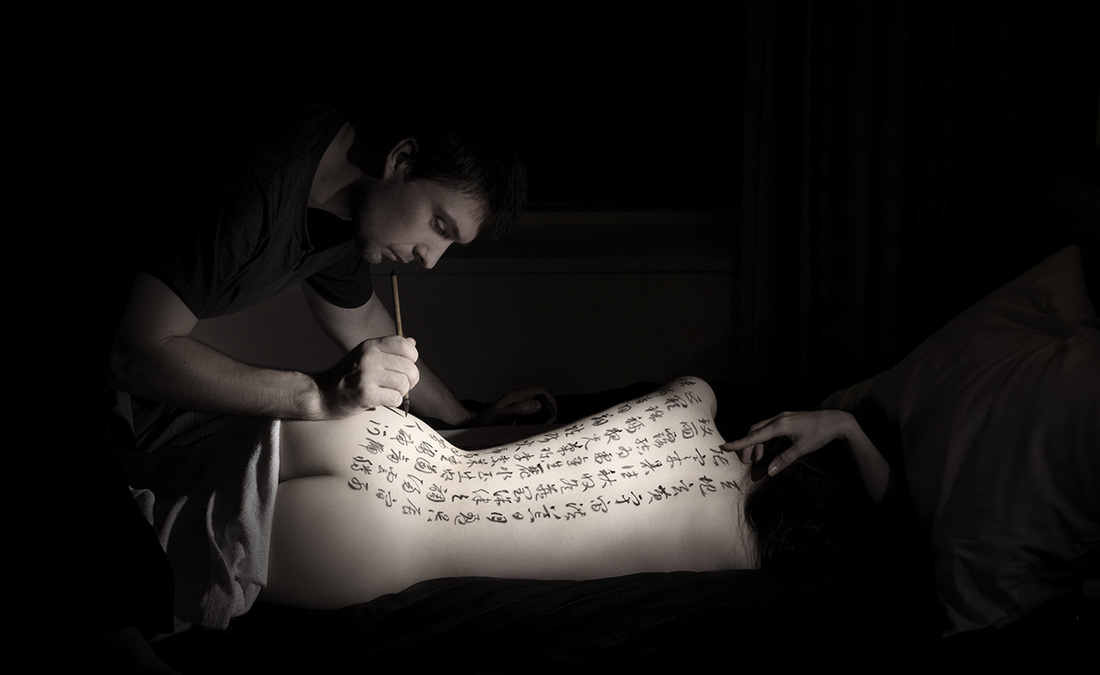
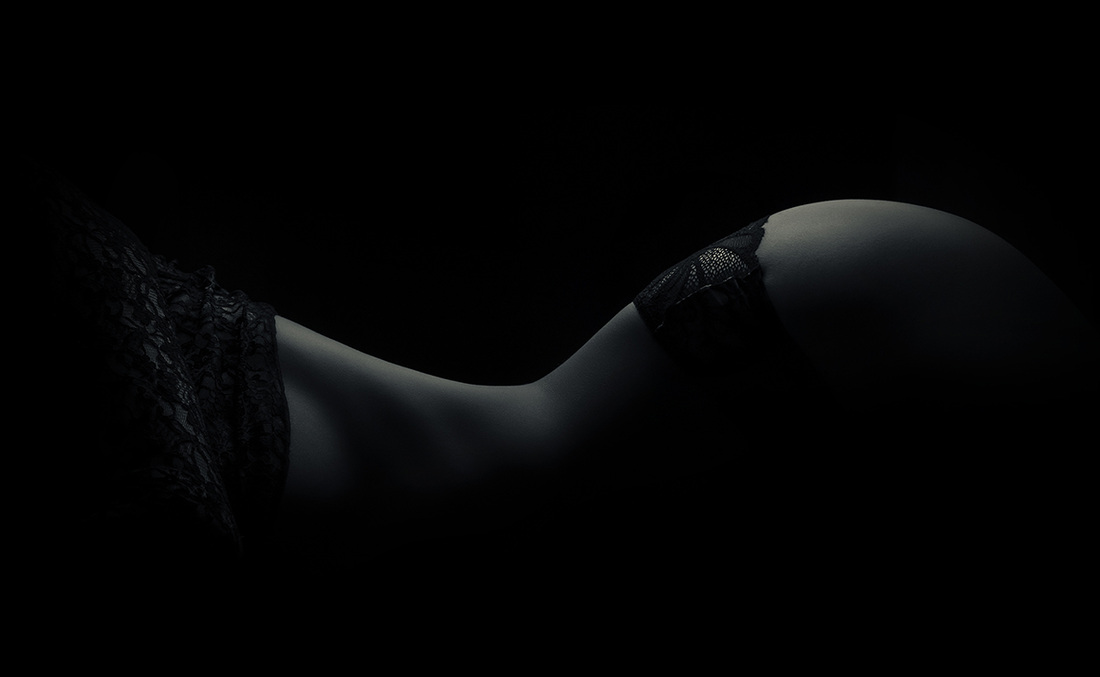
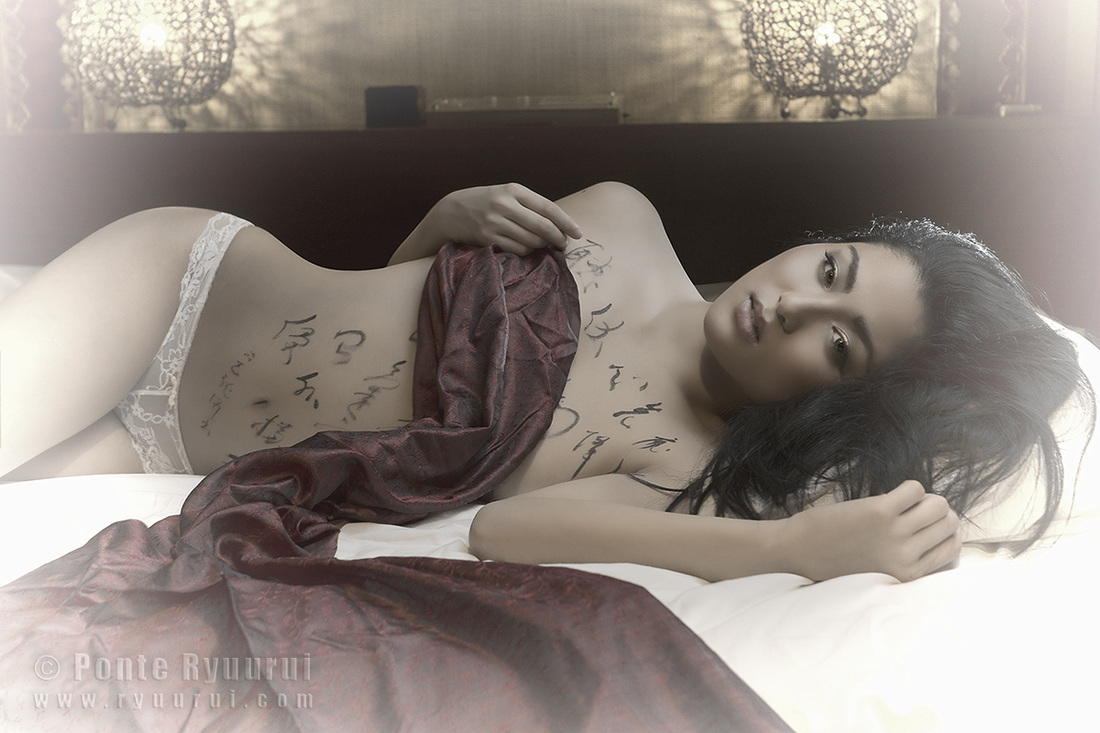
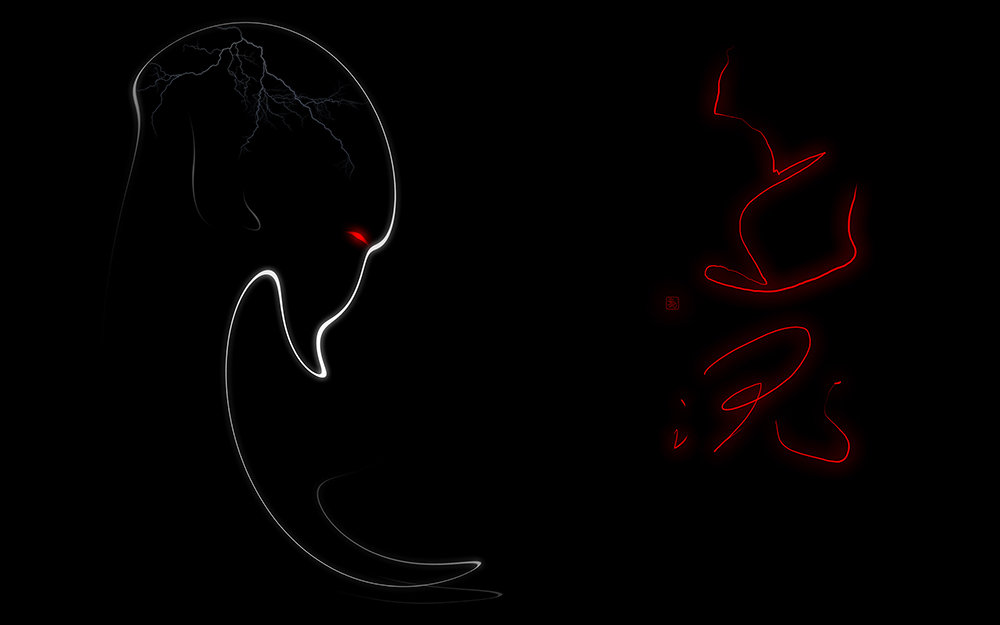

 RSS Feed
RSS Feed
